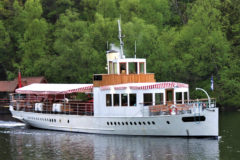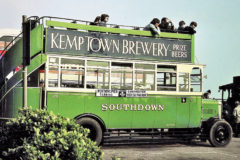Open Day & Steam Gathering report
Posted by Chris Graham on 28th August 2021
James Hamilton reports from very enjoyable Open Day & Steam Gathering, which took place at the Bursledon Brickworks Museum in late June.

Open Day & Steam Gathering: The two Aveling & Porter RC10 compounds line up, side-by-side.
There’s a wealth of industrial history and heritage to be found and enjoyed at the Bursledon Brickworks Museum, near Southampton, in Hampshire but, on June 27th it was the venue for a well-attended Open Day & Steam Gathering. The Bursledon Brickworks was founded in 1897 by the Ashby family, partners in Hooper & Ashby, a successful builders merchant in Southampton. All the machinery at the brickworks was run by steam and most of it still does. There are four static steam engines; two that run the large machinery, one for pumping water for the old boilers and one that runs a small pugmill in the country brickworks display. The main stationary engine was manufactured by John Wood & Co of Wigan, in 1885. It features a replacement governor that was made by Tangye of Birmingham, in 1905.

Aveling & Porter convertible No.4255, Queen Victoria, goes for a trundle around the site.
There are also the remains of the brickworks’ narrow gauge railway running around the site, including a 1942 20/28hp Simplex Ashby No.8694. The Simplex was built for Sir Alfred McAlpine & Son and, subsequently, worked at York Brick & Tile Company. It is powered by a Perkins three-cylinder diesel engine, instead of the original, Dorman engine.
The museum is also the home of the Southampton & District Transport Heritage Trust, which was established in 2001 with the aim of preserving former Southampton buses and other vehicles.

Stuart Magg’s showman’s tractor – only three owners from new!
Many of the traction engines present at the steam-up were form the South Hampshire Historic Steam & Engineering Society, which bases itself at the museum. Chairman of the group, Malcolm Hudson, was exhibiting his 1919 Garrett 4CD steam tractor No. 33782, Dorothy. It was originally supplied new to William Flowers & Sons for use at the company’s timber saw mills at Pangbourne, in Berkshire.
Then, during World War Two, the engine saw service hauling timber ammunition boxes (made by Flowers as part of the war effort) to the local railway station for shipment to the Ministry of Supply. During the mid-1940s, it suffered a mishap when it slipped into a roadside ditch, after which it fell into disrepair. Thankfully, the engine entered preservation in the early 1950s, and has had several owners before Malcolm, of Hedge End in Southampton, acquired it almost 20 years ago. During the winter of 2015/16, the engine had significant work undertaken, including a new firebox and tubes together with other boiler work. The canopy and boiler cladding was also renovated, repainted and lined-out.

This 6in Burrell agricultural engine has an unusual history.
Aveling & Porter general purpose engine No. 4255, Queen Victoria, was built in 1899 as a 6nhp convertible, but has always been in traction engine form. It spent its long working life in Cornwall, working for agricultural contractors and on saw-bench duties, before entering preservation in 1970 when it was acquired by the present owner, Douglas Hynd’s father. After a 20-year restoration programme, it re-appeared in time to celebrate its centenary in 1999, and is a regular ‘on the belt’ in the wood-sawing section at the Great Dorset Steam Fair.
Representing showman’s engines at the event was Garrett tractor No.32981, Katrina; a 4nhp compound engine built in 1928, and supplied to a builder’s merchant in Sussex for the general haulage of building materials. Now resplendent in the livery of its owner, Stuart Maggs, from Southampton, this engine has had just three owners from new!

The 7nhp Fowler Volunteer with the brickworks’ chimney behind.
Visiting from outside Hampshire was Aveling & Porter Class RC10 5nhp 10-ton roller No. 5156, Lydia. Built in 1902, this compound engine was new to Northwich Rural District Council, which was absorbed into Cheshire County Council in 1930. From there it went to Jacksons of Wistaston in 1953, where it received a full overhaul before being sold to the old Kerr Stuart locomotive works in Stoke-on-Trent, then Brookside Foundry & Engineering Co.
By the late 1960s, the engine was in preservation in the south-east of the country, and was purchased by Karl Woolford in 2013. Karl has completed much work on the engine, including a re-tube, new tyres, bearings, gears and having the cylinder block rebored. He also repainted and lined the engine himself, in 2017.
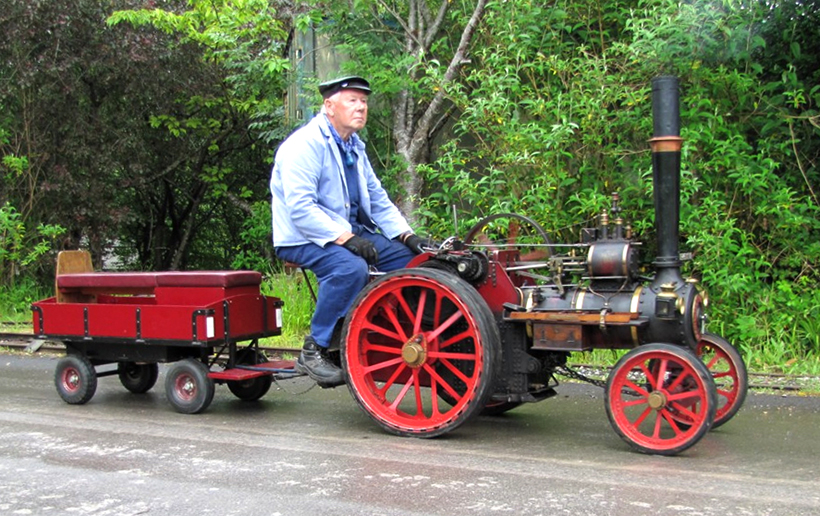
The 4in Burrell agricultural engine stretches its legs around the brickworks.
Also representing the RC10 class of Aveling & Porter compound rollers, was No.4765, Prince Albert. Built in 1901, this engine went to Alfred Williams & Co through the agency of J Hooke of Tottenham Lane, Hornsey, North London, complete with Morrisons scarifier No.389. It was rescued from Hardwicks in the late 1970s, as boiler, motion and tender only. The remaining missing parts were collected through the restoration years to allow completion to its original form in 2012.
Dave Freemantle, of Wickham, was showing his 7nhp single-cylinder general purpose Fowler traction engine, Volunteer. This engine was new to Somerset threshing contractor WJ Thyer in 1913. It was restored by Fred Simmonds, who found it in a gravel pit in Fairford.
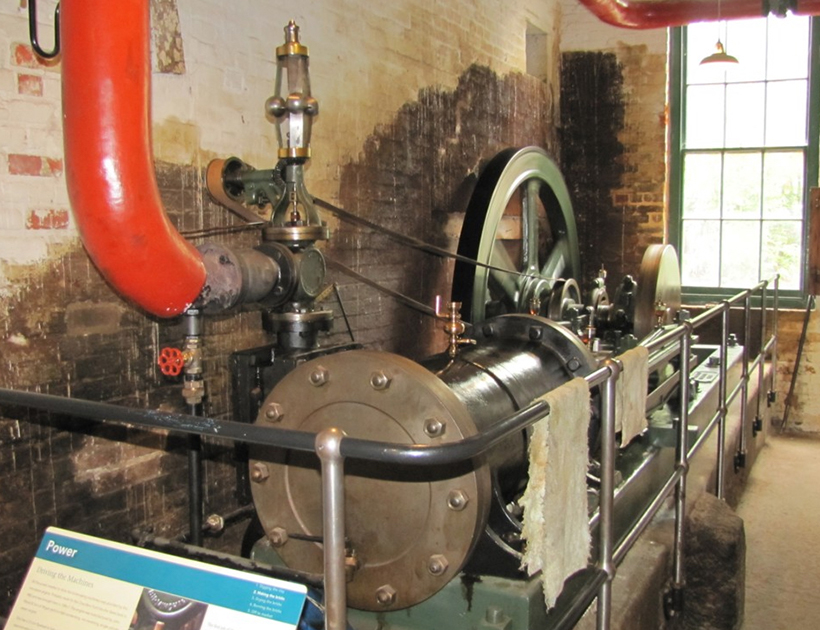
One of the resident stationary steam engines at the museum.
A popular exhibit on one of its first outings since restoration and conversion to tractor status from showman’s, was Tom Mayhew’s Burrell Gold Medal steam tractor No.3497, May Queen. Built in 1913, this engine saw service in World War One in France, having been commandeered by the War Dept. On return it worked on timber haulage before entered showman life with Miss Sally Beach. In 1952, it was saved for preservation by Arthur Napper. The Mayhew family have owned it since June 2006.
Usually, there are many miniature traction engines at this event but, this time, there were only two – both Burrell agricultural engines. Dave Pond, of Eastleigh, was showing his 6in scale engine that was built in 1970. Weighing two tons, it was built by a blacksmith on the Shetland Isles where, during the day it ran a saw bench and, in the evening, powered a dynamo that provided electricity for his home. The present owner purchased it in 1985, and restored it to its present condition.
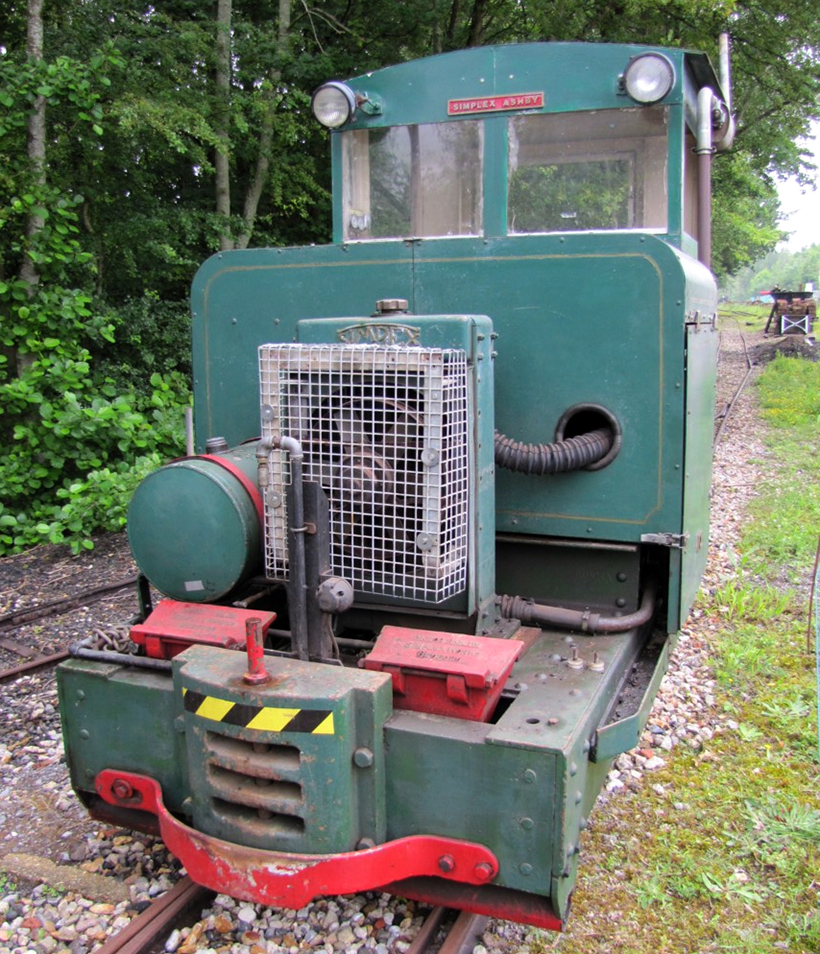
The 1942 20/28hp Simplex Ashby No.8694, now with a Perkins engine.
The project director of the Brickworks Museum, Carolyne Haynes, told Old Glory: “We are delighted to welcome visitors again, and are grateful to our volunteers for keeping the museum running. The traction engines are always a great additional attraction, and we enjoy having the South Hampshire Historic Steam & Engineering Society based at the museum, and look forward to more steam-ups in the future.”
For a money-saving subscription to Old Glory magazine, simply click here



